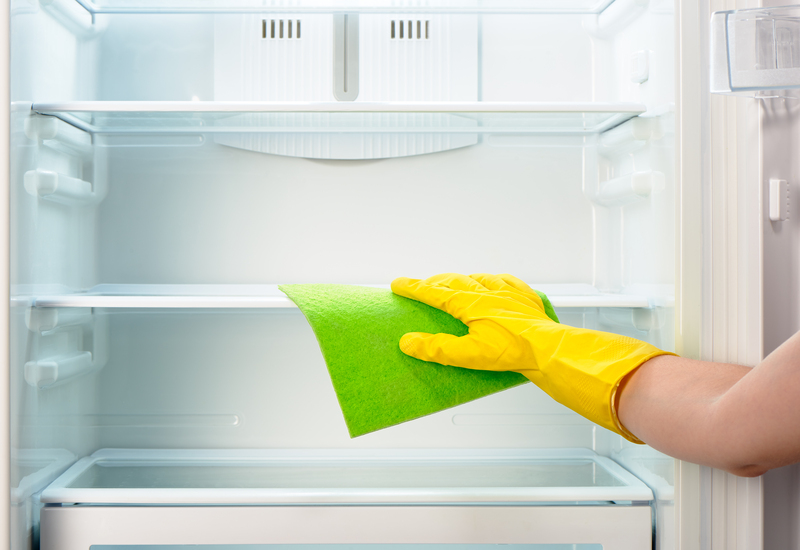Breathing Easy: The Importance of Clean Air at Home
Posted on 06/09/2025
Breathing Easy: The Importance of Clean Air at Home
Imagine walking into your home, taking a deep breath, and feeling instantly refreshed--free from hidden allergens and pollutants. The quality of the air inside your home plays a crucial role in your overall well-being and health. "Breathing Easy: The Importance of Clean Air at Home" isn't just a catchy phrase--it's a vital aspect of healthy living that deserves your full attention.
Why Is Clean Air at Home So Important?
Indoor air quality can greatly influence your health, comfort, and quality of life. While we often focus on outdoor air pollution, studies reveal that indoor air can be dramatically more polluted than outdoor air. Most people spend about 90% of their time indoors, making it essential to ensure that the air you breathe at home is as clean and safe as possible.
- Reduces risk of chronic diseases: Clean air helps lower the chances of developing respiratory issues, allergies, and even heart problems.
- Enhances sleep quality: Fresh, uncontaminated air leads to better rest and rejuvenation.
- Improves mental clarity: A clean-air environment can result in higher concentration and decreased mental fatigue.
- Protects vulnerable groups: Children, the elderly, and people with chronic illnesses are safer in cleaner air environments.
Understanding Indoor Air Quality (IAQ)
Indoor Air Quality, commonly referred to as IAQ, reflects the condition of the air inside buildings, particularly homes. Several factors--ranging from outdoor air infiltration to internal processes like cooking, cleaning, and even hobbies--can affect IAQ.
Common Indoor Air Pollutants
Some of the most common pollutants affecting air quality at home include:
- Dust mites
- Pollen
- Mold spores
- Pet dander
- Carbon monoxide
- Formaldehyde
- Volatile Organic Compounds (VOCs) from cleaning products and paints
- Cooking gases
- Tobacco smoke
- Asbestos fibers (in older homes)
These airborne contaminants are often invisible and unnoticed, but their effects can accumulate over time, particularly in poorly ventilated spaces.

The Health Impacts of Poor Indoor Air Quality
Exposure to polluted indoor air is linked to a range of health problems, from minor irritations to severe chronic diseases. Understanding these risks can help you appreciate the importance of clean indoor air and motivate positive changes at home.
Short-Term Effects
- Irritation of eyes, nose, and throat
- Headaches and dizziness
- Fatigue and difficulty concentrating
- Aggravated asthma and allergies
Long-Term Effects
- Chronic respiratory diseases such as asthma, bronchitis, or COPD
- Heart disease
- Lung cancer
- Weakened immune system
Children and seniors are particularly vulnerable because their bodies are either still developing or weakening with age. Maintaining a clean air environment is essential for their long-term health and comfort.
Sources of Indoor Air Pollution
To take proactive steps toward ensuring clean air at home, it's vital to recognize where pollutants come from and how they enter your living space. Awareness can help you pinpoint potential problems and devise effective solutions.
1. Inadequate Ventilation
The most common reason for poor air quality indoors is insufficient ventilation. In today's energy-efficient homes, tightly sealed windows and doors help reduce utility bills but might also trap pollutants inside.
2. Cooking and Heating
Gas stoves, fireplaces, and even candles can emit combustion byproducts like carbon monoxide and particulate matter. Over time, these can accumulate and compromise the air you breathe.
3. Cleaning Products and Chemicals
Many household cleaners contain VOCs that linger in the air after use. Paints, solvents, and other home improvement chemicals are additional sources of airborne toxins.
4. Biological Contaminants
Moist environments encourage the growth of mold and mildew, while pets can shed hair and dander. Dust mites thrive in bedding and upholstery, creating allergens that continuously cycle through the air.
How to Keep the Air Clean at Home
If you want to maximize the health benefits of clean indoor air, try these effective strategies to minimize contamination and improve air quality for everyone in your household:
1. Regular Cleaning
- Dust frequently using a damp cloth to avoid stirring up particles.
- Vacuum carpets and upholstery with a HEPA-filtered vacuum cleaner.
- Wash bedding and curtains regularly in hot water to eliminate dust mites.
2. Ensure Proper Ventilation
- Open windows whenever outdoor conditions permit, especially while cooking or cleaning.
- Use exhaust fans in the bathroom and kitchen to remove humidity and airborne pollutants.
- Consider installing a whole-house ventilation system for consistent air exchange.
3. Control Moisture
- Fix leaks immediately to prevent mold growth.
- Use a dehumidifier in humid climates or seasons.
- Keep indoor humidity levels below 50%.
4. Adopt Cleaner Habits
- Avoid smoking indoors.
- Restrict the use of chemical cleaners and air fresheners--opt for natural alternatives such as vinegar or baking soda.
- Choose low-VOC or VOC-free paints and renovation materials.
5. Purify and Filter the Air
- Install high-quality air purifiers: HEPA filters can capture dust, pollen, mold spores, and even some bacteria and viruses.
- Maintain your HVAC system and replace air filters regularly.
- Keep indoor plants; some species are known to absorb VOCs and produce oxygen, though plants alone can't replace a good filtration system.
Advanced Strategies for Clean Air at Home
Smart Sensors and Monitors
Modern technology makes it easier than ever to keep track of air quality. Smart air quality monitors detect particulate matter, VOCs, and carbon dioxide levels, providing real-time updates and alerts. This information enables you to take timely action, whether it's opening a window, adjusting your air purifier, or calling in a professional for urgent remediation.
Green Building and Design
For those building or remodeling, consider eco-friendly construction materials and designs that maximize natural light and airflow. Use non-toxic paints, install operable windows, and include integrated filtration and ventilation systems in your plans. Green homes are naturally healthier and more resilient to indoor air quality challenges.

Frequently Asked Questions About Clean Home Air
Q: Can indoor plants really help improve air quality?
Some indoor plants can absorb toxins like benzene and formaldehyde, and they do produce oxygen. However, don't rely solely on plants for keeping your home's air clean. They are best used in conjunction with other air purification methods.
Q: How often should I change my air filters?
Change the filters in your heating and air conditioning system at least every 60-90 days--or more frequently if you have pets, allergies, or live in an area with heavy air pollution.
Q: What's the best air purifier for a home?
Look for purifiers with True HEPA filters, which are effective at removing tiny particles like dust mites, pollen, and some bacteria. If you're concerned about odors or chemicals, choose a model that includes activated carbon filters as well. Consider the size of the room and the Clean Air Delivery Rate (CADR) when selecting an air purifier.
Q: How can I tell if I have poor indoor air quality?
Signs include persistent odors, frequent headaches, allergies, or asthma symptoms that worsen at home. Consider investing in an air quality monitor or seeking a professional assessment if you are concerned.
Q: Is indoor air quality really worse than outdoor air?
Surprisingly, yes. According to the EPA, pollutants indoors can be 2-5 times (or even up to 100 times) higher than outside in certain conditions. Adequate ventilation and effective cleaning are crucial to maintain healthy air indoors.
Conclusion: Make Clean Air at Home a Priority
Breathing easy at home isn't a luxury--it's a necessity for your well-being. As you spend more time indoors, the importance of healthy indoor air cannot be overstated. From reducing the risks of respiratory illnesses to improving overall comfort, the benefits of maintaining clean air in your home are far-reaching.
Take small, consistent steps--like regular cleaning, using air purifiers, and ensuring proper ventilation--to create a healthier indoor environment for you and your loved ones. Your lungs, mind, and body will thank you for prioritizing the air you breathe at home.
Remember: Investing in clean air at home means investing in your future health and happiness.




